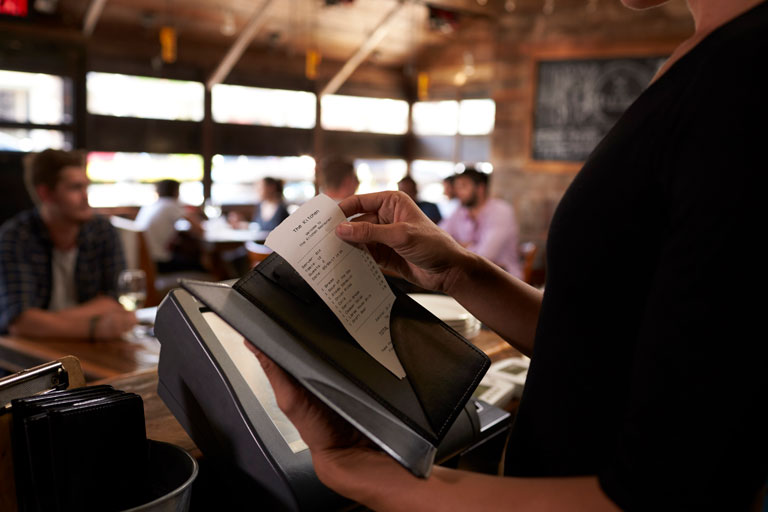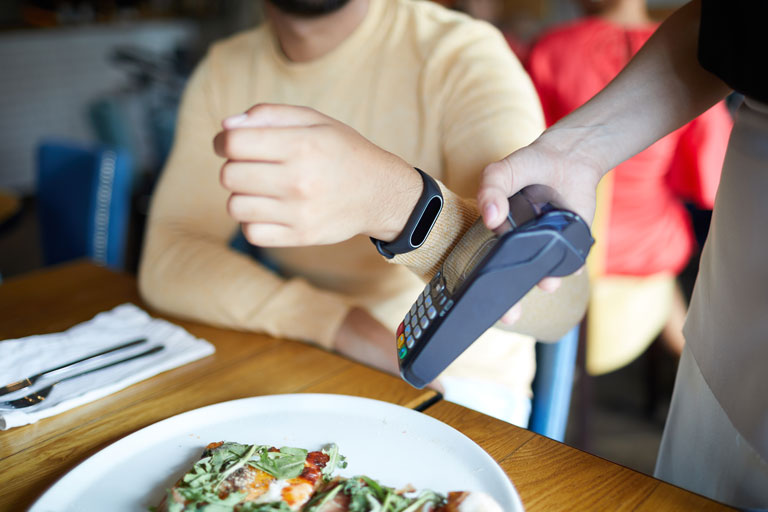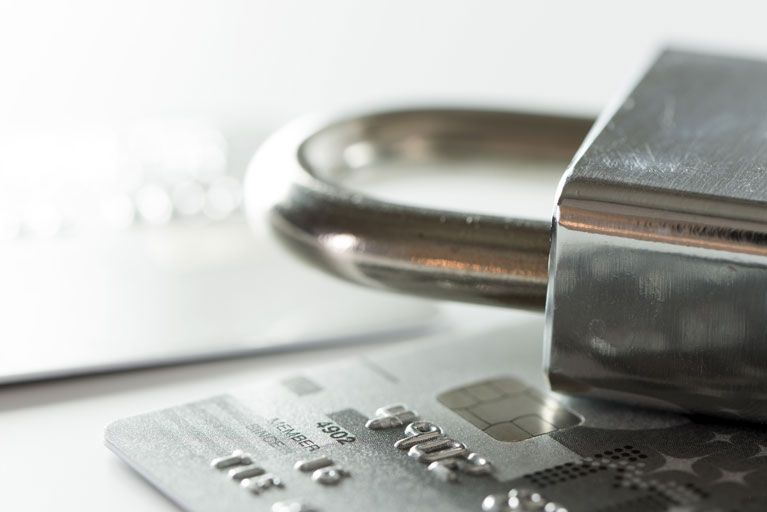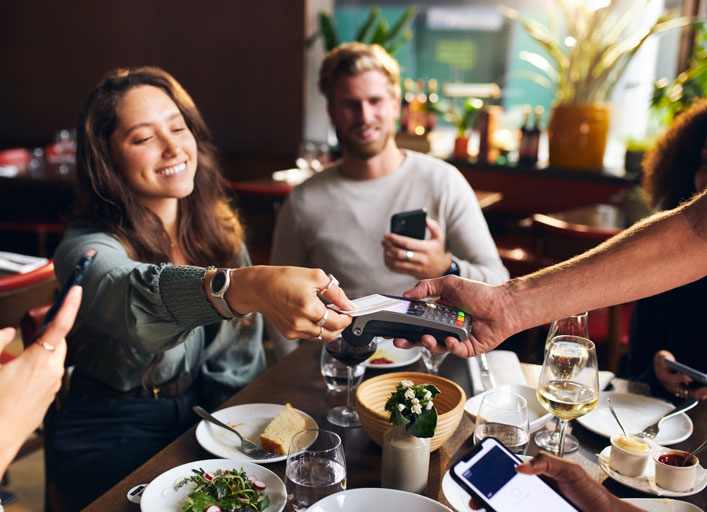The latest payment processing technology is one of the most exciting developments in the business world. One new POS solution that is becoming increasingly present in restaurant settings is pay-at-the-table technology.
This involves a POS terminal at the table, or a mobile POS device brought to the table by a server after the meal is concluded. There are several benefits to this type of tableside payment solution.
Obstacles to the Restaurant Industry
The restaurant business was particularly impacted by the Covid-19 Pandemic. In some places, quarantine rules created very limited seating arrangements. Consumers may have felt burdened by mask restrictions on the one hand, or uncomfortable exposing themselves to medical risks on the other.
That’s probably why the same survey found an almost 66% year-on-year decline in the number of diners eating out in 2021. And as 2022 becomes 2023, new challenges are arising for the restaurant business. Inflation is eating away at discretionary spending power. Not only do consumers feel the need to tighten their wallets, but restaurateurs will need to up their prices to cover the rising cost of food.
To make matters worse, the restaurant business is short-staffed by about 750,000 workers, which is putting a strain on operations. At this point, restaurant owners need to search out all possible options for reducing expenses, streamlining operations, and creating a positive customer experience. Pay at the table touchless payment technology is one solution that can address these concerns.
5 Benefits of Pay-at-the-Table Solutions
- More Efficient Checkout Process
- Increases Table Turns and Frees Up Staff
- Contactless Checkout
- Reduced Fraud and Fewer Chargebacks
- Better Customer Service and Higher Gratuities
Most people love going out to eat. According to consumer surveys, 90% of polled diners say that going out to eat is enjoyable, and 75% prefer taking family or friends out rather than cooking for them. And as many as 45% of diners eat out twice a week– whether that be dine-in or online ordering and curbside pickup. Restaurants have a variety of ways to serve their guests, it’s in their best interest to streamline all services and payment solutions.

Pay-at-the-Table Devices Create a More Efficient Checkout Process
In a traditional dining setup, after the meal is concluded and the plates are cleared, a waiter will bring over the check and leave it on the table, often in a leather wallet promoting Amex, Visa, Mastercard, or Discover. When the customer is ready, they will put their credit card or debit card into the wallet and leave it on the table, indicating they are ready for their card to be charged.
The waiter will then (hopefully) come back (soon) and take the card to run the charge. The whole affair can take a few minutes or more, which can create a negative guest experience and lots of thumb-twiddling in the days before people had smartphones.
Pay at the table POS can allow the diners and their waiter to forgo this entire ritual and streamline the serving experience. Of course, servers should still ask if the diners are ready for the check because some diners do like to linger after the meal and perhaps enjoy dessert.
In some cases, there is an extra layer of efficiency added if the POS software is integrated with an electronic menu, which can save additional time that would have been used to compile a list of charges. Customers can order and pay at the table with the same device.
Pay-at-the-Table Devices Increase Table Turns and Frees Up Staff
The success of a restaurant in the kitchen depends on how well the chef can turn leftovers into new dishes (helpful hint: soup du jour is the end destination of everything). And the success of the restaurant on the floor depends on how efficiently the wait staff can turn the tables over. A restaurant that can keep things moving will serve more diners and make more money.
Conversely, a slow checkout process lowers the number of diners served and often creates a frustrating experience for those waiting—in fact, some diners say that waiting is one of the most frustrating parts of the dining experience.
A mobile or tableside POS terminal speeds up the checkout process, which in turn means that tables can be cleared, cleaned, and set up for the next round of diners a lot faster. Tableside payment solutions can also free up staff during the time it would have taken them to bring the card to the back and run the charge.
During the post-pandemic staffing shortage, a few minutes here and there can go a long way toward filling the gaps in staffing. For instance, if you are short on busser, waiters can clear tables as well. Or if you are short on waiters they can start taking orders at another table.

Pay-at-the-Table Devices Offer Contactless Checkout
In the traditional way of settling a restaurant bill, lots of surfaces will be touched. The waiter will touch the check presenter (that fancy black wallet), the diner will touch it and their credit card as they put it in the wallet, and the waiter will touch the card as they run it.
Not to mention the diner has been touching their food, potentially their face, and their phone, while the waiter has been touching other people’s food, things in the kitchen, trays, and who knows what else. All this touching may make customers uncomfortable in the post-pandemic era when consumers are more conscious about exposure to viral health risks.
Restaurants with contactless payment and near-field communication card reader technology can eliminate all of that potentially germy interaction, by allowing diners to tap their card instead of handing it over. Many cardholders adopted mobile payment preferences such as Google Pay or Apple Pay during the pandemic times for contactless experiences. In fact, a survey by Appetize conducted during the pandemic found that 77% of diners were still hoping to use contactless payment methods even after the pandemic ended.
Health-conscious wait staff serving dozens of tables every shift may also greatly appreciate the reduced contact. As an additional note, some restaurants have used the contactless payment option of QR codes on receipts to affect tableside payments. But the downside to this method instead of an actual POS terminal is that it is run as a card-not-present charge, which is not only more expensive to the merchant but opens the door to more fraud and chargebacks.

Pay-at-the-Table POS Reduce Chargebacks and Fraud
A waiter removing a credit or debit card from the sight of its owner is rife with opportunities for fraud. Recent studies found that there may be as many as 271,000 incidents of credit card fraud in small business settings (albeit not just restaurants) were reported.
In one particular incident, waiters were using lipstick-sized skimming devices to extract information from the magnetic strip and purchase vintage French wines, Louis Vuitton purses, Cartier jewelry, and famous works of art (true story).
Pay-at-the-table restaurant technology can entirely eliminate the possibility for card information to be stolen when the plastic is out of sight—either by the waiter or by someone hacking into the POS terminal in the back later.
In a related topic, tableside payment can eliminate chargebacks. If diners disagree with a certain charge, they will let you know right there, and then instead of calling their bank a few days later to dispute the entire transaction.
As recently as a few years ago, chargebacks were already costing business owners a collective annual $11.2 billion. And some estimates suggest that by 2023 the average chargeback on a $90 tab will cost a business $191. Again, tableside payment can eliminate fraud and chargeback concerns, saving your restaurant money and reputation.

Pay-at-the-Table POS Creates Better Customer Service and Higher Gratuities
As mentioned earlier, pay-at-the-table technology can streamline the checkout process. Restaurant owners will have to navigate the implementation of a tableside payment process with some tact because it does present the potential for making diners feel rushed if not done right.
However, if the payment is collected courteously—for instance, asking first if the diners are done, and then returning to the table with the POS, or if the POS is already at the table, letting the diners know they are free to pay whenever they are ready—then diners will appreciate the transparency and efficiency of the process.
Wait staff may also see higher gratuities with the implementation of tableside POS solutions for two reasons. One is that many of these solutions offer tipping prompts which are more impactful than small print at the bottom of a check…not to mention that hitting a button is easier than calculating 18 or 20 percent.
Another reason is that the increased efficiency offered by tableside POS can result in waiting more tables, which of course means collecting more tips. Waiters should keep health considerations in mind and perhaps wipe down the surface of the POS with a disposable sanitizing wipe, which will send a strong trust signal to the diner vis-a-vis their health concerns.
Conclusion
There are other benefits to pay at the table tech that we did not even highlight yet, such as saving money on receipt paper (yes, it adds up) and integrating the POS with some analytic software. The customer data provided by these new fintech software solutions, if integrated properly, can yield a goldmine of information about which appetizers are best-sellers, and which ones need to be eighty-sixed (or have their ingredients turned into soup du jour).
Additionally, for all the reasons outlined above, it’s very likely that more and more restaurants will begin implementing the tableside payment method as a way of letting diners settle the check.
To contact sales, click HERE. And to learn more about ECS Pay at the Table technology visit Restaurant.
